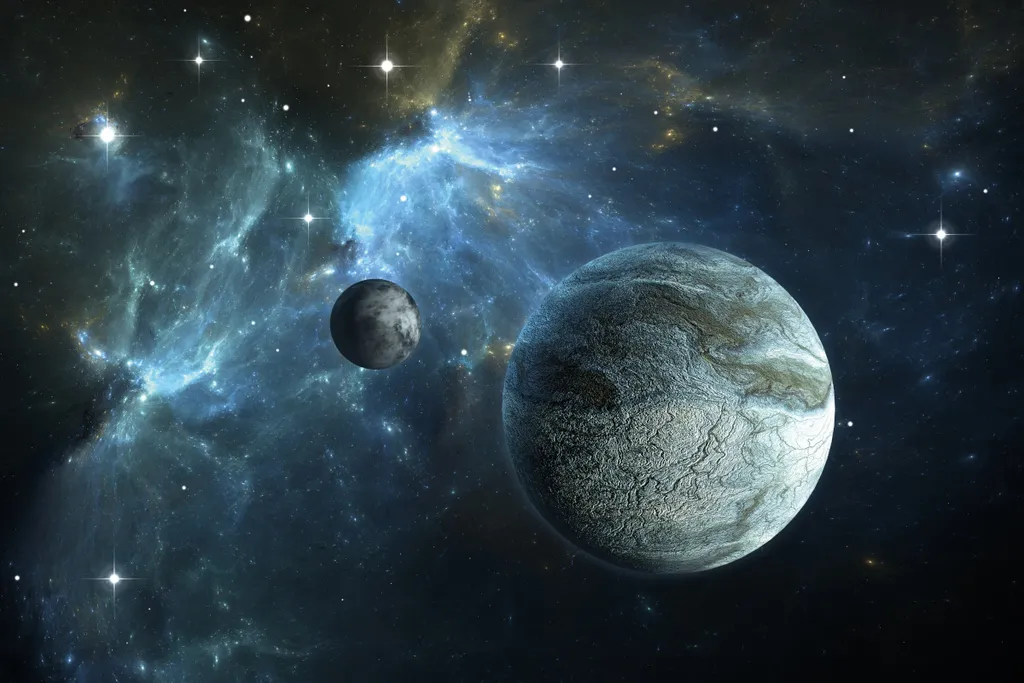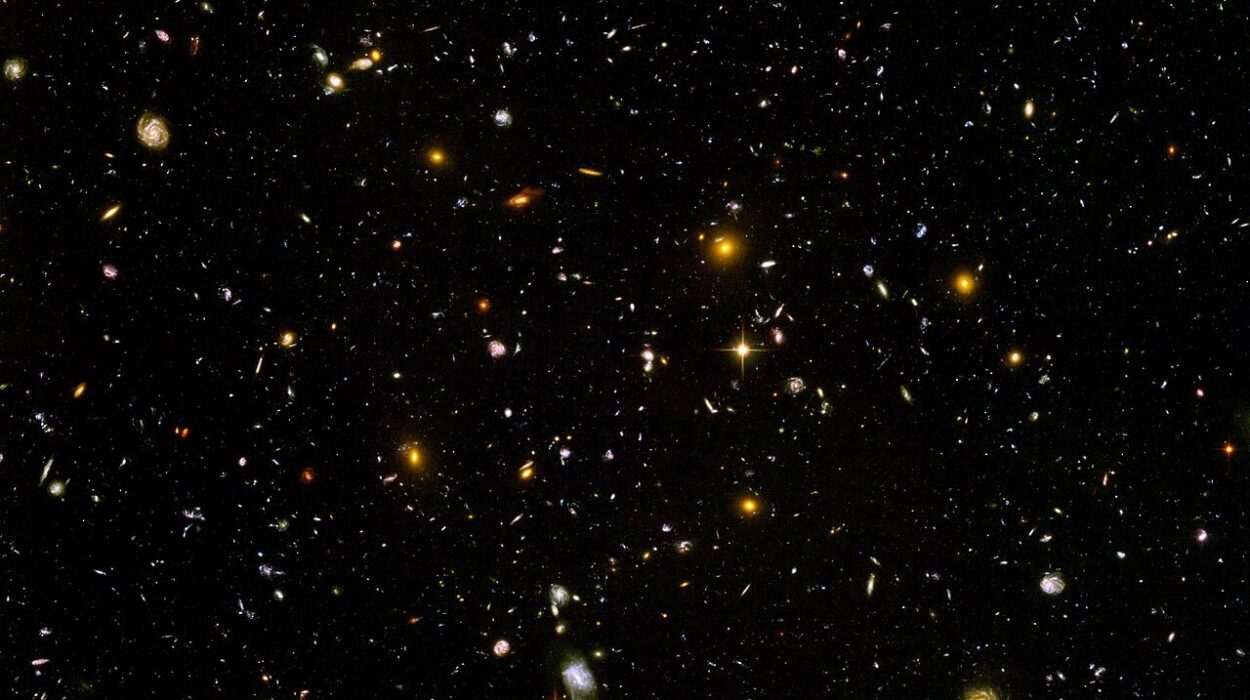The universe is not only vast, ancient, and beautiful—it is also deeply strange. Beyond the glowing stars we see at night lies a cosmos full of bizarre objects and phenomena that defy human intuition. Space is a place where time warps, light bends, entire galaxies collide, and matter itself behaves in ways that are difficult to imagine. It is a cosmic stage filled with mysteries so weird they seem like science fiction, yet they are entirely real.
In this article, we will explore ten of the weirdest phenomena discovered in outer space. Each one reveals just how strange and wondrous the universe truly is, reminding us that the cosmos is far stranger than anything our imaginations could invent.
1. Rogue Planets: Worlds Without Suns
When we think of planets, we imagine them orbiting stars, just as Earth circles the Sun. But not all planets follow this rule. Some worlds wander alone in the darkness, untethered to any star. These are called rogue planets.
Scientists believe there could be billions of rogue planets in our galaxy, some even larger than Jupiter. They may have formed around stars but were ejected by gravitational forces, drifting silently through interstellar space. Without a sun to warm them, rogue planets are cold, lonely wanderers. Yet some may still have subsurface oceans warmed by internal heat, raising the tantalizing possibility of hidden life.
The idea of entire planets roaming freely through the galaxy is both eerie and fascinating. Imagine a planet the size of Earth, floating in complete darkness—an invisible traveler carrying secrets of cosmic history.
2. Neutron Stars: The Universe’s Most Extreme Objects
When a massive star dies in a supernova, it can collapse into a neutron star—one of the strangest objects in existence. These remnants are so dense that a single teaspoon of neutron star material would weigh about a billion tons on Earth.
Neutron stars are only about 20 kilometers wide but can contain more mass than our Sun. Their gravity is so intense that atoms themselves are crushed, and matter is squeezed into a soup of neutrons. Some neutron stars spin incredibly fast, rotating hundreds of times per second, and emit beams of radiation, making them detectable as pulsars.
Even stranger, some neutron stars may have “mountains” just a few millimeters high, because the crust is so rigid that taller mountains cannot exist. Others may have magnetic fields trillions of times stronger than Earth’s, earning them the name magnetars. These magnetic fields are so powerful they could erase credit cards from thousands of kilometers away.
Neutron stars push physics to its absolute limits, making them some of the weirdest and most extreme objects in the universe.
3. Black Holes and Spaghettification
Few phenomena capture the imagination like black holes—regions of space where gravity is so strong that nothing, not even light, can escape. Black holes are born when massive stars collapse, creating singularities surrounded by event horizons, the “points of no return.”
What happens if you fall into a black hole? Scientists predict a bizarre process called spaghettification. As you approach, the difference in gravity between your head and feet becomes so extreme that you are stretched like spaghetti. At the same time, you would see the outside universe speed up, as time for you slows to a crawl relative to distant observers.
Black holes also warp space and time in dramatic ways. Some may merge, releasing gravitational waves that ripple across the cosmos. Others could theoretically act as gateways to other universes, though this remains speculative.
Though terrifying, black holes are among the most fascinating and mysterious phenomena in space, reshaping our understanding of gravity, time, and reality itself.
4. Fast Radio Bursts: Mysterious Signals from the Cosmos
In recent years, astronomers have detected strange, powerful signals known as Fast Radio Bursts (FRBs). These are millisecond-long flashes of radio waves coming from distant galaxies, releasing more energy in that instant than the Sun does in an entire year.
The origins of FRBs remain a mystery. Some are one-time events, while others repeat. Theories range from highly magnetized neutron stars to colliding black holes. A few more speculative ideas even suggest advanced alien civilizations might be involved, though there is no evidence for this.
What makes FRBs especially weird is their unpredictability. They appear randomly across the sky, with no warning, and vanish just as quickly. Detecting and studying them is like trying to capture lightning in a bottle.
The fact that such powerful cosmic signals exist, yet we don’t fully understand them, makes FRBs one of the strangest mysteries of modern astronomy.
5. Cosmic Strings: Cracks in the Universe
Cosmic strings are theoretical phenomena that may be relics of the early universe. They are imagined as ultra-thin, ultra-dense filaments of energy stretching across space, like cracks in the cosmic fabric.
If they exist, cosmic strings would be incredibly bizarre. They might be thinner than an atom but heavier than entire planets, warping space and time around them. Some theories suggest they could create gravitational waves or even act as shortcuts through space.
While no cosmic strings have been definitively observed, scientists are searching for their telltale effects, such as distortions in light from distant galaxies. If confirmed, cosmic strings would not only be strange but also provide clues about the fundamental physics of the universe.
6. Quasars: Cosmic Beacons Brighter Than Galaxies
Imagine an object so bright it outshines an entire galaxy. That’s a quasar. Quasars are powered by supermassive black holes at the centers of galaxies, where matter falling in creates disks of gas heated to extreme temperatures. The result is a cosmic beacon that can be seen across billions of light-years.
Quasars are among the most luminous objects in the universe, some releasing more energy than a trillion stars combined. They often appear in the early universe, suggesting they played a role in galactic evolution.
What makes them weird is their sheer intensity. How can something so small, just the region around a black hole, produce such vast energy? Quasars remind us that black holes are not just destructive—they are also engines of light and power, shaping the cosmos in unexpected ways.
7. The Boomerang Nebula: The Coldest Place in the Universe
Space is generally very cold, with temperatures close to absolute zero. But one particular region is even colder than the natural background of the universe: the Boomerang Nebula.
Located about 5,000 light-years from Earth, this nebula is a cloud of gas and dust expelled by a dying star. Its temperature has been measured at just 1 Kelvin (-272°C), making it the coldest known place in the universe.
How can something be colder than the cosmic microwave background? The answer lies in the rapid expansion of gas from the central star, which cools the surrounding material to record lows.
The Boomerang Nebula is a reminder that space can still surprise us, creating natural laboratories of physics stranger than anything found on Earth.
8. White Holes: Theoretical Opposites of Black Holes
If black holes are regions where nothing can escape, what about their opposite? Theoretical physics predicts the possibility of white holes—objects where nothing can enter.
White holes would expel matter and energy but never allow anything in. They appear as solutions to Einstein’s equations of relativity, but no white hole has ever been observed. Some scientists speculate they might be connected to black holes, possibly through wormholes, or represent earlier stages of black hole evolution.
While white holes remain hypothetical, the idea that the universe could harbor objects that reverse the rules of black holes is one of the strangest possibilities in physics.
9. Galaxy Collisions: Cosmic Smash-Ups
In the vastness of space, galaxies are constantly moving, and sometimes they collide. While this may sound catastrophic, galaxy collisions are surprisingly beautiful—and weird.
When galaxies merge, their stars usually pass by each other without colliding, because space is so vast. But their gas clouds and dust do interact, triggering massive bursts of star formation called starbursts. The result is spectacular, reshaping galaxies into new forms.
Our own Milky Way is on a collision course with the Andromeda Galaxy, and in about 4 billion years, the two will merge. Far from being destructive, this collision will create a stunning new galaxy, possibly called “Milkomeda.”
Galaxy collisions remind us that the universe is not static but alive with motion, constantly reshaping itself in cosmic dances that last billions of years.
10. Dark Flow: A Cosmic Current Beyond Our Universe?
One of the strangest discoveries in cosmology is something scientists call dark flow. In studying the motion of galaxy clusters, astronomers noticed they seem to be drifting in one particular direction, faster than expected.
This mysterious movement cannot be explained by the visible matter, dark matter, or even dark energy within our observable universe. Some theories suggest that dark flow might be influenced by structures beyond the edge of the observable universe—perhaps other universes exerting gravitational pull.
If true, dark flow could be evidence that our universe is not alone, but part of a larger multiverse. While the phenomenon remains debated, it is one of the most tantalizing and weirdest mysteries in space science.
Conclusion
Outer space is not just a backdrop for stars and planets—it is a realm of astonishing and baffling phenomena. Rogue planets drift alone in the dark, neutron stars push matter to extremes, and black holes warp time itself. Signals flash across the sky without explanation, galaxies collide in slow-motion dances, and strange forces hint at realities beyond our universe.
The weirdness of the cosmos is not a flaw—it is a feature. Each bizarre discovery expands our understanding and reminds us how small, yet how curious, we are in the grand scheme of things. Space is not only weirder than we imagine—it is weirder than we can imagine.






